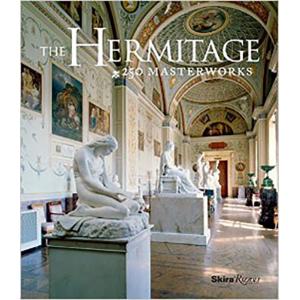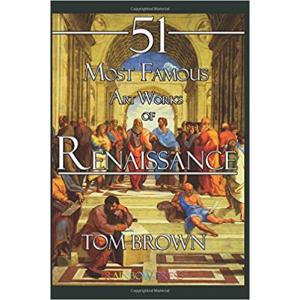Leonardo da Vinci: The Mystery Surrounding the Four Madonnas at the Hermitage Museum
by Cathy Locke

"The Madonna Litta" 1480-1490
Every museum has a story to tell about its collection and the State Hermitage Museum is no exception. When I began giving art tours in Russia I was trying to learn the basics about the collection, but as time went on I also uncovered some interesting stories that you may not find in the history books. The Hermitage has two Madonnas by Leonardo da Vinci (1452-1519) and two by Raphael (1483-1520). These four paintings represent major accomplishments as well as major controversy. The oldest of these is Leonardo’s Madonna and Child (1478), also known as the Benois Madonna. This painting has been described as follows, “A young woman with a bald forehead … a toothless smile... with a child who looks like a hollow mask fixed on inflated body….” Though unfinished, this very valuable work that belonged to the family of the notable St. Petersburg architect Leonty Benois, whose wife had inherited it from her father, the merchant Alexander Sapozhnikov. In 1912, Maria Benois decided to sell the painting and sent it abroad; the London antiquarian Duveen offered 500,000 francs for it but the Russian public launched a drive to raise funds to purchase the masterpiece for the Hermitage Museum. Maria Benois eventually consented to sell the painting to the Russian government for the sum of just 150,000 roubles as a goodwill gesture and in 1914 the Benois Madonna was added to the Hermitage collection. Raphael’s Madonna and Child (1502), also known as the Contestable Madonna, was painted the same year he received his master status with the painter’s guild. Raphael’s The Holy Family (1505-1507), also known as Madonna with the Beardless St. Joseph, represents a meteoric jump in the artist’s skill set and is perhaps highly influenced by Leonardo’s Mona Lisa (1503–1517). Finally, Leonardo’s Madonna and Child (1480-1490), also known as the Litta Madonna, is possibly the most controversial of all!
“Art is never finished, only abandoned.” - Leonardo da Vinci

"Benois Madonna" 1478
This unsigned masterpiece, the Litta Madonna, marks the beginning of High Renaissance painting. It depicts the Virgin Mary breast-feeding the Christ child. The figures are set in a dark interior between two arched openings with a landscape employing atmospheric perspective. Together these elements create the perfect ideal of Renaissance harmony. The Christ child holds a goldfinch, symbolic of his future Passion. However, this painting is a great source of controversy among art historians, many of whom believe it was primarily painted by Leonardo’s pupil Giovanni Antonio Boltraffio (1466/1467–1516). There are a number of Leonardo’s preparatory drawings in existence of the Madonna’s head and baby, which leads historians to believe that he composed the painting. Other indications are the tilt of the Madonna’s head and the lack of halos which were very common in Leonardo’s work. There is a drawing by Bolraffio, Study of a Child's Head (1490-91), which is very close to the finished head of the Christ child in the Litta Madonna, strengthening the possibility of collaboration between the two painters. Scholars who have studied the Litta Madonna point out that the Christ child bears little resemblance to others produced by Leonardo. Art historian David Alan Brown1 argues that Leonardo’s other star student, Marco d'Oggiono (1470–1549), was responsible for the Litta Madonna, because its composition is reflected in his later works, whereas it is not in those by Boltraffio. Many historians believe that Leonardo only painted the Virgin's head and the rest of the painting was completed by either Boltraffio or d'Oggiono, under the supervision of the master.

Leonardo noted on a drawing currently at the Uffizi Museum in Florence that he had begun “two Virgin Maries” in late 1478. It is believed that one of those paintings was the Litta Madonna which he took with him when he moved to Milan to begin working on the Last Supper in 1482. According to the biographer Giorgio Vasari, Boltraffio was born in Milan and came from an aristocratic family in the area. It is most likely that Boltraffio joined Leonardo’s workshop in Florence around the time he was twelve years old. Boltraffio is considered one of the strongest talents to come out of da Vinci’s workshop. Vasari writes that Leonardo was under great pressure to complete the Last Supper and was often seen walking around absorbed in thought “without making any progress…” Vasari goes on to say, “that men of genius are sometimes producing most when they seem to be laboring least.”2 Considering the great task of creating the Last Supper and other accompanying paintings it is doubtful that Leonardo had much time to work on the Litta Madonna.
Leonardo became famous for developing invisible markers that he embedded into his compositions. One of those markers was the chalice cup in the Last Supper. There is an additional invisible marker embedded into the Litta Madonna. The face of Mary is tilted down, proudly gazing at her feeding child. The Christ child stares back at the viewer, creating a three-dimensional triangle between the viewer, mother and child. This is a phenomenon that becomes very evident when you are standing in front of the actual painting, though I have never seen it mentioned by an art historian.
The earliest secure information about the purchase of Litta Madonna was when it was bought in 1784 by Prince Alberico XII di Belgioioso (?–1813) from his architect Giuseppe Piermarini (1734–1808). After Belgioioso's death it passed into the collection of Antonio Litta Visconti Arese (1748-1820). It remain with the Litta family in Milan until 1865 when Tsar Alexander II acquired the panel directly from Count Antonio Litta, who was the quondam minister to Saint Petersburg.3 According to the State Hermitage Museum’s website (accessed December 2015) “Count Litta, owner of a family picture gallery in Milan, offered his collection to the Hermitage, sending a list of forty-four works for sale and desiring that an agent be sent to Milan to carry on negotiations. Stephan Gedeonov, director of the Imperial Hermitage, was dispatched to Milan where he selected four paintings at a price of 100,000 francs. The most valuable of these was a Madonna and Child by Leonardo da Vinci. The painting was purchased on 12 January 1865 and has since then been called The Madonna Litta.” It is this author’s understanding that the painting remained in the private possession of the Tsars and did not become part of the Hermitage Museum’s collection until after the Revolution of 1917. After WWII the Hermitage Museum’s restoration department transferred the painting from its wood panel to canvas. Each splinter of wood was carefully removed using tweezers, then glued to the canvas backing. There is mention that at this point the painting was then completely repainted.
About the Author
Cathy Locke is an award-winning fine art painter, professor, published writer and lecturer. She is the editor-in-chief of Musings-on-art.org and specializes in Russian and European art.
Cathy Locke’s artwork – www.cathylocke.com









